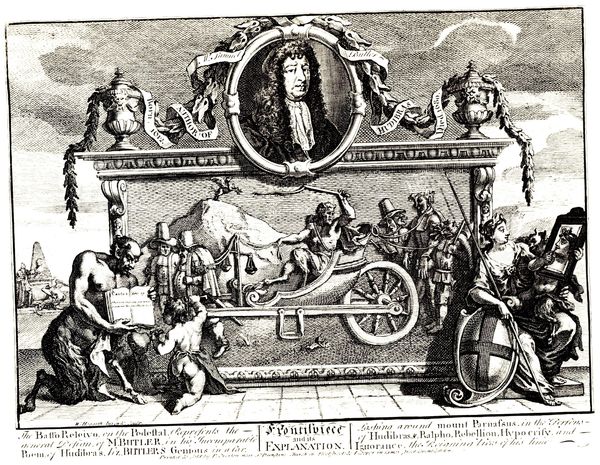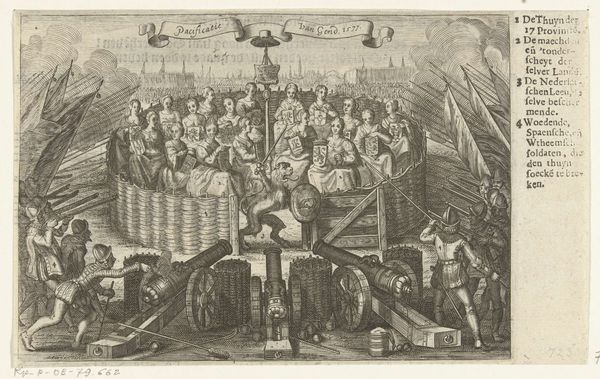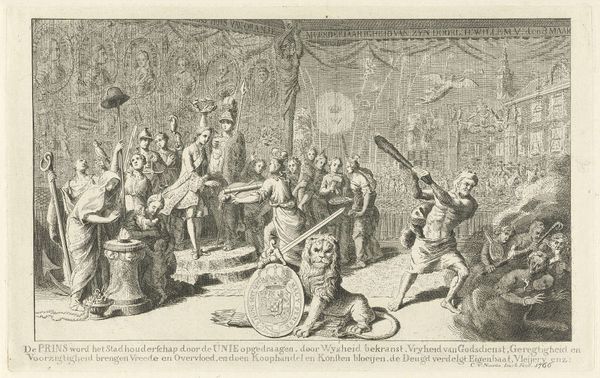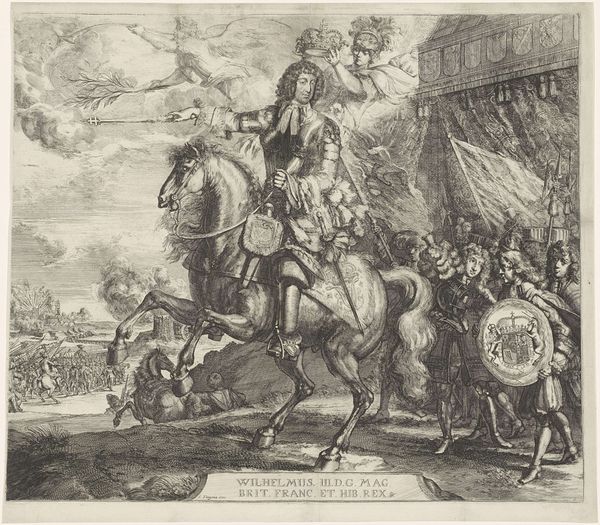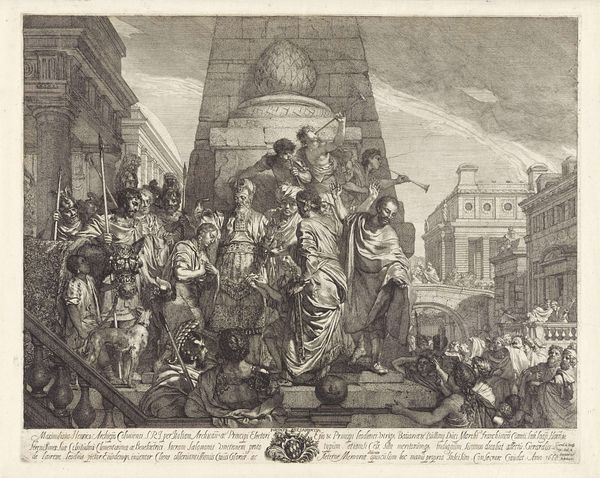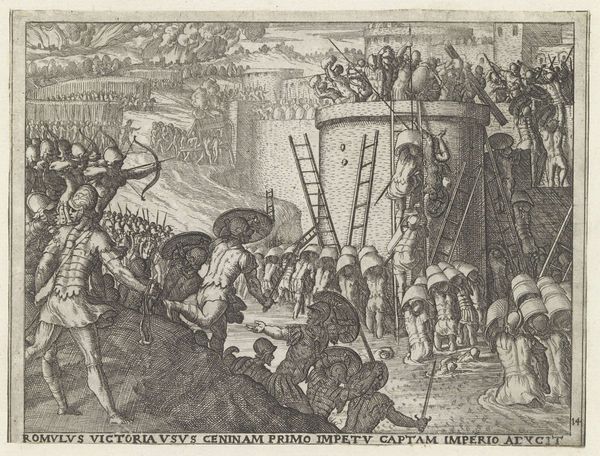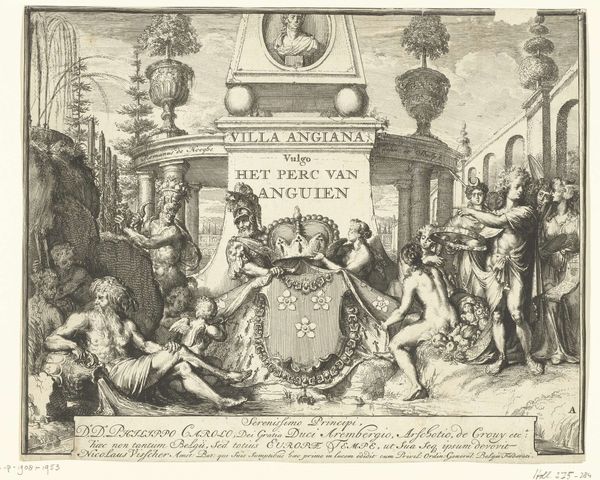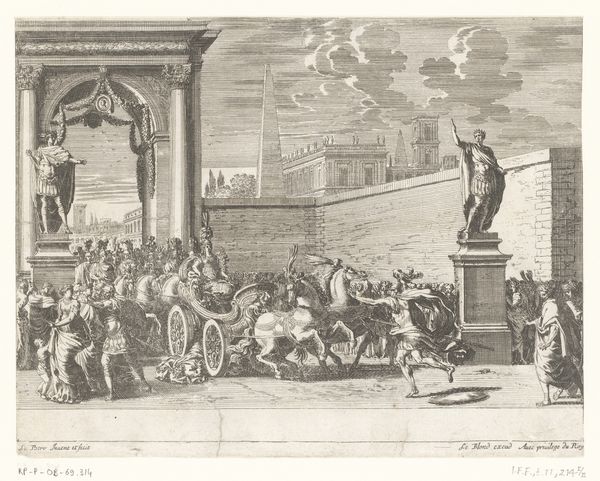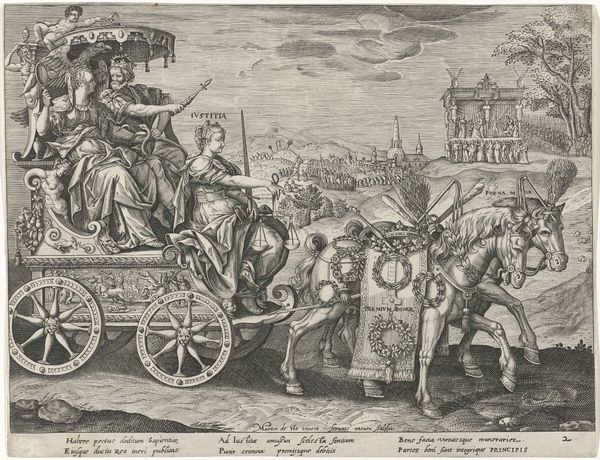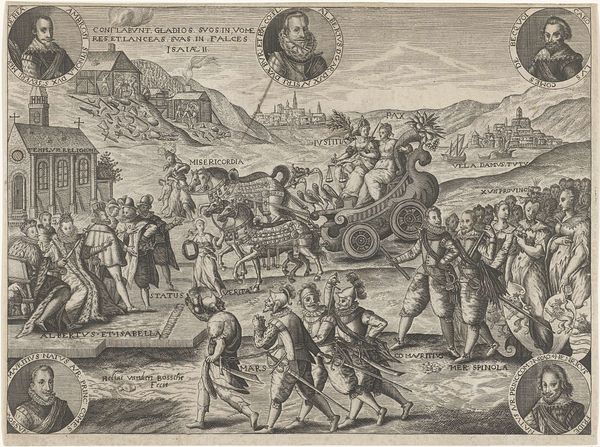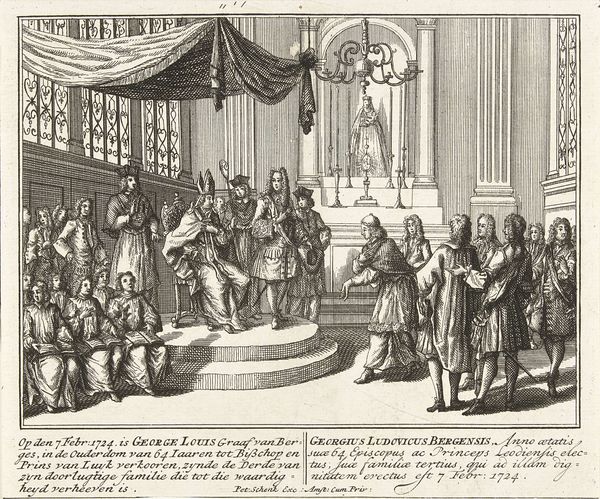
print, engraving
#
allegory
#
baroque
# print
#
figuration
#
history-painting
#
engraving
Dimensions: height 438 mm, width 584 mm
Copyright: Rijks Museum: Open Domain
Curator: This is an engraving called "Allegory on the Welcome of Königsmarck," created sometime between 1651 and 1680 by Gerrit Gerritsz van Fenaem. The composition seems… monumental, doesn’t it? All this visual rhetoric feels very baroque. Editor: It does! It feels overwhelmingly celebratory, almost to the point of being baroque bordering on ostentatious. I'm immediately drawn to the procession: the chariot, the figures, even the lions seem caught up in this moment of... well, apotheosis, really. There’s a kind of divine welcome being staged here. Who was this Königsmarck to deserve such a greeting? Curator: He was a military figure, a Count, actually. This print, with its allegorical figures, presents him as a conquering hero, you know, welcomed into a city after a victory. See the woman kneeling by the gateway? And the figure on the chariot with the radiant halo, that could be an idealized representation of virtue or fame. Editor: Right, right. And lions! They symbolize strength, of course. Are they pulling the chariot over a bridge, I wonder? This must be signifying the crossing over into immortality and acceptance in to society. And I spy Latin inscriptions—classic. This engraving certainly screams "prestige." Is that Envy being crushed under the wheels of the chariot at the base? Curator: I believe you are right. And it’s interesting, this connection between military achievement and… what? The conquest of death through reputation, perhaps? Königsmarck's deeds guaranteeing lasting fame. What stories do we want told of us, when we leave our physical selves? It almost reads like state sponsored hagiography now, if that makes sense. Editor: Absolutely. The artist is really thinking about historical narratives and power. This print, beyond its celebration of an individual, speaks to broader societal values and aspirations. Even though it appears frozen in its own historical moment, the artwork touches on something fundamentally human. Curator: A very good way to look at the work and I think it opens us up to more readings and ways of thinking than when we first began. The images that last make new converts over the generations.
Comments
No comments
Be the first to comment and join the conversation on the ultimate creative platform.
